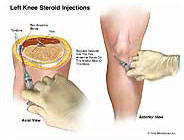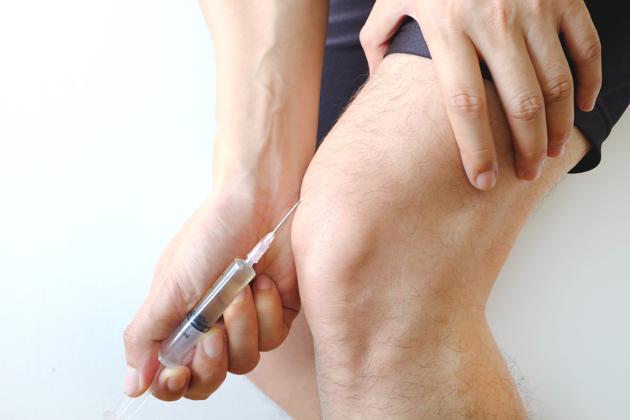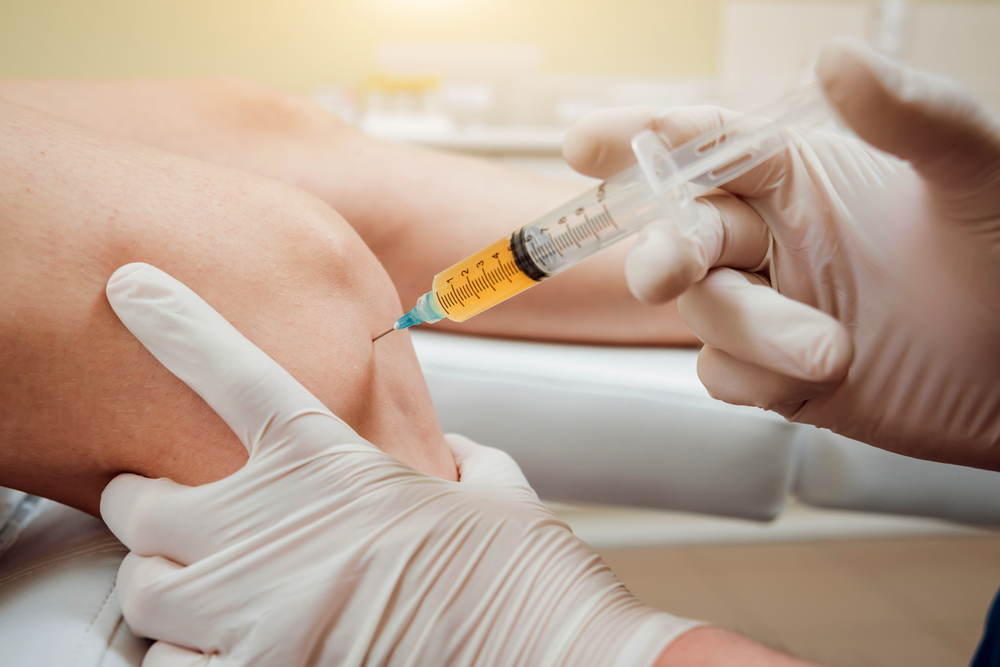
Pain and redness are common short term side effects after injections and usually subside within 1-2 days. Post injection, the patient is advised to apply ice and take over the counter nonsteroidal anti-inflammatory and pain medications as needed for 1-3 days. Often the physician might also use ultrasound guidance to deliver the injection at the correct location. The injection site is covered with a sterile dressing. The physician marks the site of needle insertion with a sterile marker, and the injection is delivered. Numbing medication is applied to the location of injection, to make it the injection less painful. The site of injection and the adjacent area is cleaned with a povidone-iodine solution. The patient is positioned for easy access to the involved joint. Numbing medication is usually injected along with the cortisone to provide immediate pain relief. Diabetic patients must have their blood sugar levels well-controlled before the shot as the blood sugar levels may shoot up after the injection. Before the procedure, the physician ensures that the patient is not on any blood thinners and is not having any active infection. The patients may receive a cortisone shot in the doctor’s office as an outpatient procedure. The local cortisone injections create increased concentration at the site leading to more powerful anti-inflammatory action.

On the contrary, systemic steroids, although suppress the inflammation but may lead to long term side effects. The shots are given locally in specific areas of the body, so minimum levels reach the entire body. The cortisone shots are usually a part of a broader treatment plan, including physical therapy, cold/heat therapy, etc.

The reduction in inflammation leads to relief from pain and swelling. The steroids help to dampen the immune system and reduce inflammation. The adrenal glands naturally release the steroid in the body.

The injections contain a steroid medication that is delivered locally in the joint, tendon, or bursae. The steroid injections are helpful in back pain and inflammation of bursae and tendons. The shots may also be given for painful joint conditions such as gout. The injection may also be used for joint pain caused by inflammatory arthritis such as rheumatoid arthritis and psoriatic arthritis. The injection is most commonly given for osteoarthritis by orthopedic surgeons. The injection may be given in the elbows, hips, ankle, wrist, spine, etc.Ĭortisone vial, alcohol swab, and the syringe. The cortisone shots are widely given in the knee and the shoulder joint, but may be given in other joints as well. In cases where a cyst, ganglion, bursa or joint is distended with fluid, the cortisone will be injected after an attempt to aspirate (remove) the fluid in order to improve comfort.Cortisone or corticosteroid injections are commonly given to reduce the pain and inflammation at the site of injection. – a previous bad experience has resulted in a fear of needles, or there is a general anxiety/phobia of needles and other medical procedures. – the needle tip requires to be repositioned several times in order to distribute the cortisone effectively – the area to be injected is severely painful
Care after steroid injection in knee skin#
Local anaesthetic is only injected into the skin if more than one pass is made through the skin. Also, the needle used to inject the local anaesthetic results in similar discomfort as the needle delivering the cortisone. It is our experience that injecting local anaesthetic into the skin in a single pass procedure is actually more painful, as local anaesthetic stings a little prior to taking effect. If only one pass is planned (meaning that the needle will only penetrate the skin once) then local anaesthetic is usually NOT injected into the skin. The degree of discomfort during the procedure is generally mild as the needle used is fine and local anaesthetic is mixed in with cortisone.This gives you the best chance of pain relief, as injections performed without guidance may not work due to incorrect placement of cortisone.

The guidance allows a high dose of cortisone to be accurately delivered into the area of suspected/proven pain without the side effects of taking cortisone tablets.


 0 kommentar(er)
0 kommentar(er)
